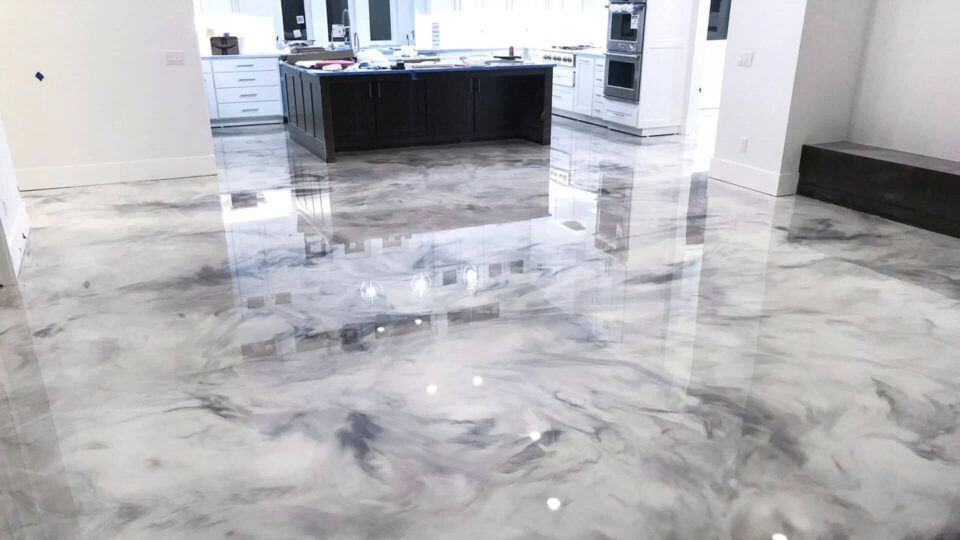When people think of sustainable interiors, their minds often go to bamboo furniture, recycled textiles, or energy-efficient lighting. But one of the most overlooked contributors to eco-friendly living lies right under our feet: the flooring. In recent years, epoxy floorings has emerged as a strong contender for homeowners, designers, and business owners seeking a balance between aesthetics, durability, and sustainability. Far from being just an industrial solution, epoxy is reshaping the future of green interiors.
Understanding Epoxy Flooring
Epoxy flooring is created by combining resins with hardeners to form a strong, durable, and seamless surface. Traditionally used in warehouses and garages due to its toughness, epoxy has evolved into a design-forward option available in metallic, terrazzo-style, and even marble-effect finishes. Its versatility means it can complement everything from minimalist apartments to upscale commercial interiors.
But what makes epoxy truly exciting today is its potential to support sustainable living goals.
Longevity Means Less Waste
One of the cornerstones of sustainability is durability. The longer a product lasts, the less frequently it needs replacing, which reduces resource consumption and landfill waste. Epoxy floors are known for their long lifespan — often 20+ years with proper care.
Compare this to other flooring options:
Carpets typically need replacing every 5–7 years.
Vinyl and laminate may last 10–15 years but are difficult to recycle.
Hardwood is long-lasting but requires constant maintenance and can contribute to deforestation if not sourced responsibly.
By resisting cracks, stains, and heavy traffic, epoxy flooring minimizes replacement cycles, making it a more sustainable choice in the long term.
Energy Efficiency Benefits
Another surprising advantage of epoxy flooring is its contribution to energy efficiency. Light-reflective epoxy finishes can brighten up interiors by reflecting natural and artificial light. This reduces the need for excessive lighting during the day, lowering electricity consumption.
For commercial spaces like warehouses, showrooms, or offices, this can translate into significant energy savings. At home, it creates a brighter, more inviting space while subtly cutting down on utility bills.
Low-VOC and Eco-Friendly Formulations
A major concern with traditional flooring materials is the release of volatile organic compounds (VOCs) — harmful chemicals that affect indoor air quality. Modern advancements in epoxy technology have led to low-VOC and water-based formulations, making them much safer for both installers and occupants.
By choosing certified low-VOC epoxy products, homeowners and businesses in eco-conscious cities like Abu Dhabi or Dubai can align their interiors with green building standards such as LEED (Leadership in Energy and Environmental Design).
Reduced Resource Use During Installation
Epoxy flooring doesn’t require extensive raw materials like timber, quarrying for stone, or high-energy processes for ceramic tiles. In most cases, epoxy is applied directly over an existing concrete surface, which minimizes demolition waste and reduces the need for new raw materials. This streamlined installation process contributes to lower overall environmental impact.
Ease of Maintenance and Reduced Chemical Use
Maintenance is another area where epoxy flooring shines. Unlike carpets that trap dust or tiles with grout lines that require aggressive cleaning agents, epoxy surfaces are seamless and non-porous. This makes them resistant to dust, mold, and bacteria.
Cleaning an epoxy floor often requires nothing more than mild soap and water — no harsh chemicals. This not only reduces chemical use in your home but also helps preserve indoor air quality and water systems.
Versatility Across Interior Applications
Sustainability doesn’t mean sacrificing style or versatility. Epoxy can be tailored to suit a wide range of interior spaces:
Residential Homes: Sleek, seamless epoxy floors in living rooms and kitchens offer a modern aesthetic while being easy to maintain.
Commercial Spaces: Retail shops, restaurants, and gyms appreciate epoxy’s durability and hygiene benefits.
Healthcare & Schools: Non-toxic, seamless epoxy floors support safe and sterile environments.
This adaptability makes epoxy a one-stop solution for diverse interior needs without requiring multiple material types — another factor that simplifies and streamlines resource use.
Comparing Epoxy to Alternatives
To understand why epoxy is becoming a frontrunner in sustainable flooring, let’s compare it with some common options:
Wood: Beautiful and natural but contributes to deforestation if not certified sustainable. Needs regular maintenance.
Tiles: Durable but energy-intensive to produce and often waste-heavy during installation.
Vinyl: Affordable but petroleum-based, with recycling challenges.
Carpets: Comfortable but short-lived, dust-prone, and difficult to recycle.
Epoxy balances durability, low maintenance, and design flexibility, making it a more future-ready flooring solution.
The Future Outlook
As sustainable design gains momentum globally, epoxy manufacturers are innovating with bio-based resins, recycled fillers, and ultra-low-VOC coatings. These advancements will further solidify epoxy’s role in green architecture and interior design.
Cities in the UAE, which are at the forefront of sustainable urban development, are already seeing increased adoption of epoxy flooring in both residential and commercial projects. As awareness grows, epoxy will likely move from being seen as purely industrial to a mainstream eco-luxury option.
Final Thoughts
Sustainability in interiors is not just about what looks good today — it’s about making choices that stand the test of time while minimizing environmental impact. Epoxy flooring embodies this balance perfectly. With its durability, energy-saving qualities, low maintenance, and evolving eco-friendly formulations, it’s easy to see why epoxy flooring is positioned as the future of sustainable interiors.
For homeowners, architects, and business owners alike, investing in epoxy flooring Dubai means investing in a cleaner, greener, and more stylish future.

